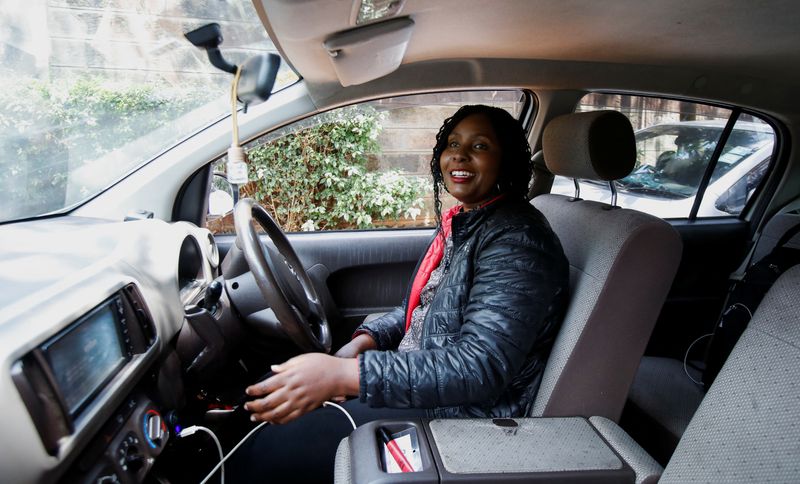Hard-pressed Kenyan drivers defy Uber’s algorithm, set their own fares
2024.08.20 12:05
By Edwin Okoth
NAIROBI (Reuters) – In eight years of working as a taxi driver in Kenya’s capital, Judith Chepkwony has never seen business this bad.
A bruising price war between ride-hailing companies Uber Technologies (NYSE:), Estonia’s Bolt and local start-ups Little and Faras has driven fares down to a level that many drivers say is unsustainable, forcing them to set their own higher rates.
“Most of us have these cars on loan and the cost of living has risen,” Chepkwony told Reuters. “I try to convince the customers to agree to the higher rates. If they can’t pay, we cancel and let them find another driver.”
About half the passengers who get in touch eventually agree to pay more than the price flashing up on their app generated by the companies’ algorithms, Chepkwony said, keeping her going.
But Uber has said such arrangements break its guidelines and told its drivers to get back into line, setting up a clash between the slick, automated world of the international ride-hailing industry and the messier realities of one of its biggest developing markets.
The East African nation of 50 million people has been rocked by deadly protests against tax hikes which, together with high prices of basic commodities and elevated interest rates, has been blamed for lower disposable incomes.
Kenya, Nigeria and Tanzania – with their growing economies and relatively low car ownership rates – are among the most important markets for Uber in Africa, its executives have said.
But there have been challenges along the way. Drivers have gone on strike in Kenya, twice this year and at least once last year, over low commissions.
Uber Head of East Africa Imran Manji told Reuters it was reviewing reports of customers being overcharged. “We encourage all riders to report such instances.”
Linda Ndung’u, Bolt’s manager for Kenya, said they were discouraging fare-hiking while the industry searches for a solution to balance the needs of drivers and customers.
While everyone waits, the drivers are finding ways to get round the industry’s united front.
Many say they use walkie-talkie app Zello to collectively agree on higher prices, meaning a customer will get the same rate even if they shop around.
Drivers have also produced a fare guide, which they print, laminate and post up inside their cars for customers to see.
One seen by Reuters set the minimum fare at 300 shillings ($2.33), above the 200 shillings set by Uber and Bolt who sometimes offer further discounts.
“We first ask the client where they are going and how much is shown on the app. Then we propose a rate based on our chart which can also be done by quickly multiplying by 1.5,” Nairobi-based driver Erick Nyamweya said.
“If they agree, we take the ride. If not we either negotiate further or decline because the current rates are not sustainable with higher fuel and spare parts prices.”
There has been some movement. Local start-up Faras Cabs raised its fares by up to a fifth this month to accommodate drivers’ demands, Chief Commercial Officer Osman Abdi said.
At the end of the day, it is the customer that pays, in money and time spent haggling.

“The negotiations end up taking so much time that it ends up beating the logic of trying to save time by taking a cab,” said one customer, Lameck Owesi. “It is frustrating.”
($1 = 128.5000 Kenyan shillings)








